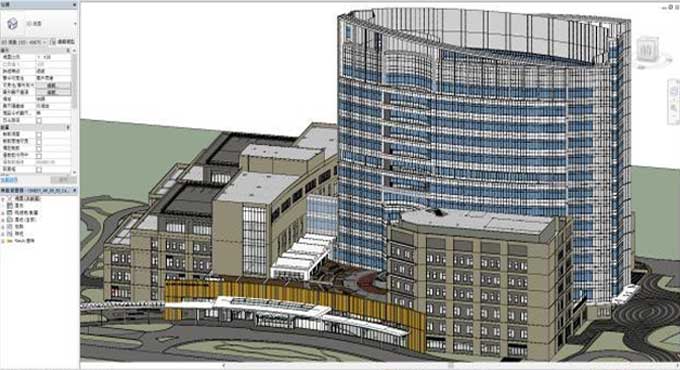How Revit will contribute to BIM in 2023
Tweet
In the past two decades, Building Information Modelling or BIM has become an integral part of the design process, and Revit has become an industry standard for BIM software. In 2023, Revit will be even more essential for architects and other construction professionals, as its functionality and capabilities continue to expand.
Define Revit
For those unfamiliar, Revit is BIM software designed by Autodesk which is used to create 3D models of buildings and structures. It allows architects and engineers to design and document projects from start to finish in a 3D environment, and it has become a crucial tool in the construction industry.
Revit Features
Cloud Based Collaboration
In 2023, Revit will be even more important to architects and construction professionals. For one, Revit features a powerful cloud based collaboration platform that will enable multiple project stakeholders to work together on the same file simultaneously. This will help to streamline the design process and reduce the amount of time spent on revisions, while also simplifying the project management process.
Project Cost
Revit will be able to provide accurate estimates of project costs and time frames, allowing for a better estimation of timeline and budget.
Accurate Rendering
Revit will also be able to provide more detailed and accurate renderings of buildings and structures, making it easier for architects to create realistic 3D models of their projects. Additionally, Revit will include advanced features such as automated lighting, material, and HVAC systems, as well as advanced tools for energy analysis and sustainability.
Importance of Revit in BIM
In the field of Building Information Modelling, or BIM, Revit will still be a crucial tool in 2023 for a number of reasons.
Comprehensive BIM Solution
A complete solution for BIM processes is provided by the potent software platform Revit. It enables the creation, design, analysis, and collaboration of building models by architects, engineers, and construction specialists in a single integrated environment. Throughout the course of a project, Revit's BIM capabilities enable multidisciplinary coordination and information sharing.
Industry Standard
In the field of architecture, engineering, and construction, Revit has emerged as the BIM industry standard. Since Revit has become a popular choice for BIM software among many businesses and organisations, experts must be proficient users of Revit to stay competitive in the field.
Parametric Modelling
Revit's parametric modelling capabilities enable the creation of intelligent 3D models. Elements within the model can be associated with data and parameters, allowing for dynamic changes and updates throughout the design process. This parametric nature enhances design efficiency, accuracy, and flexibility.
Interoperability
In BIM processes, Revit provides interoperability with various software applications. It allows for smooth collaboration and information exchange with multiple disciplines and stakeholders because it can import and export data in a variety of formats. Interoperability in the design and construction process eliminates errors and conflicts while streamlining cooperation.
Analysis and Simulation
Designers and engineers can assess the effectiveness of their building plans using Revit's integration with a variety of analytical and simulation tools. It makes it possible to do simulations for energy analysis, structural analysis, lighting analysis, and other simulations to improve the efficiency and sustainability of buildings.
Documentation and Construction
Strong documentation and construction detailing capabilities are provided by Revit. Construction documentation including plans, sections, elevations, schedules, and annotations are all automatically generated using this process. This improves accuracy and streamlines the documentation process, lowering errors and rework during construction.
To get online demonstration, watch the following video tutorial.
Video Source: Man and Machine
Collaboration and Coordination
The collaborative features of Revit improve communication and coordination among project team members. The same model can be worked on by multiple users simultaneously.
Wrapping it Up
As the world of architecture and construction continues to evolve so too the technology used to help create buildings and structures. For architects and construction professionals in 2023, Revit will be an essential platform for cloud based collaboration.
The software offers accurate estimates of project costs and time, advanced rendering capabilities, energy analysis, and sustainability features, among other features. Architects and construction professionals can create realistic and energy efficient 3D designs with Revit.

Gallery
Feel free to contact us for BIM requirements. One of our representative will respond you within 24 Hours. Send us your projects requirement today and grow your project.
Explore More !







